Normally when we find a barbecue place that we like it’s in a small town, hours away from an airport and sometimes not even located on a proper street. Then we post photos and stories of these meals and rave about them to our friends, which often leaves them feeling envious, and sometimes outright mad. We don’t mean to taunt them with these un-sharable meals, but nonetheless we have allowed a wall of “barbecue jealousy” to come between us and them. ![]()
A perfect example of this came out of our “Manic Asia” trip in 2010. We had been unable to go to China to experience its regional cuisine firsthand, but while in a Taipei night market we came across a Uyghur street cart selling the traditional food of China’s Xinjiang Province – skewers of meat grilled over charcoal. It was Chinese barbecue and it tasted damn good. That trip had about fifteen “best meals” and this cart was one of them, but coming home, we couldn’t fully share the experience. Our stories were just that and bringing samples back for our friends wasn’t possible.
Then we came upon the Xinjiang Barbecue Cart in Flushing, Queens. The cart is a two-man setup located just off of Main Street, within steps of the last stop of the 7 Train. There is no neon sign, booming music, Twitter feed or Foursquare account to draw people in, just the words “Traditional Xinjiang Barbeque” written in English and Chinese on the side of the cart. Walking past it, the most you might see is a plume of smoke and a short line of people snaking down Kissena Boulevard towards the library. It was here that we took a dozen of our friends who up to this point had only been able to hear about our barbecue trips after the fact.

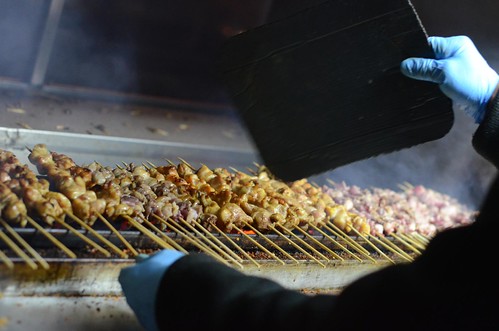
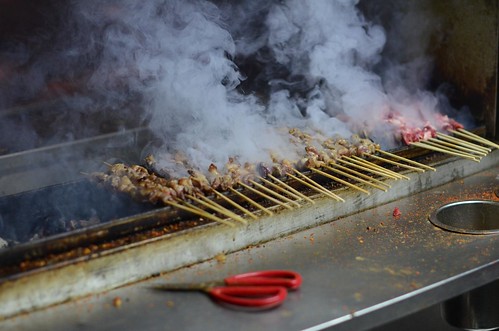
The Xinjiang cart sells its meat by the skewer: one dollar for one stick of six or seven chunks of lamb, beef or chicken. Having just come from the first bar of 2012 College Point Pub Crawl, our group continued to buy in rounds – every third person placed an order similar to “2 beef, 3 lamb and 4 chicken.” As the first of our friends bit in, we could see on their faces that they liked it. Bite by bite that wall of “barbecue jealousy” began to crumble as they paused chewing just long enough to utter the sort of short exclamations that we’ve uttered time and again on our trips. Before long everyone started going back for second and third rounds. When a couple friends went back for a fourth round just for themselves, the rest of us just stood back and watched.

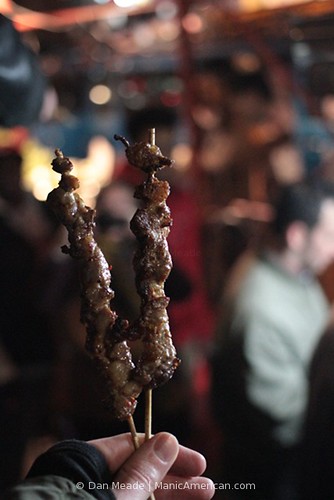
Like many of the places we had told them about, the beauty was in the simplicity of the Xinjiang cart. The prepared skewers were stored in a refrigerator tray. Above that lay the charcoal-fired grill. With each order the grillmaster, who wore the kind of blue latex gloves normally seen in a dentist’s office, would clear and clean a section of the grill, take out the needed skewers, dash on a hint of spice and let the fire and smoke do the work.
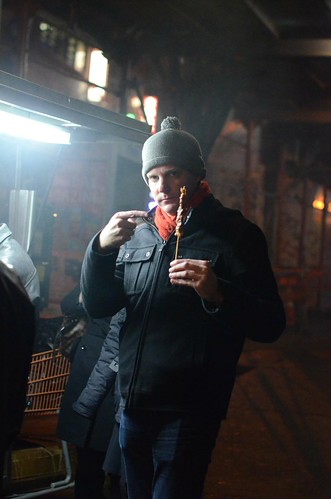
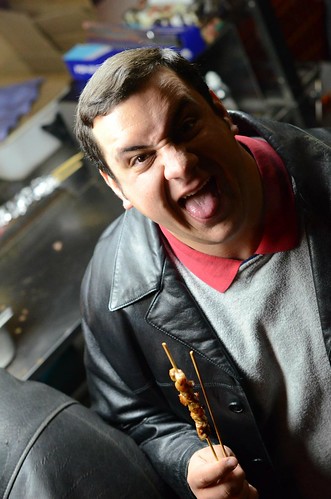
Once ready, the grillmaster or his assistant would cut off the tips of the skewers with a pruning shear and hand them to the customer. On this shortened stick was barbecued meat cooked just enough to remain juicy while keeping the flavor in. The spices used – mostly salt, chili pepper and cumin – were there to enhance the flavor of the meat, not overwhelm it. These were applied to all three meats, but the lamb was given a special distinction: If you told the grillmaster that you wanted it spicy, he dashed it with chili oil.
It was the same method that the Uyghur vendor half a world away had used, and it created the same effect – we had been able to taste regional Chinese barbecue first hand without having to travel there. The only difference was that we had paid for it in American dollars instead of Taiwanese, and this time we were able to share the experience with our friends.

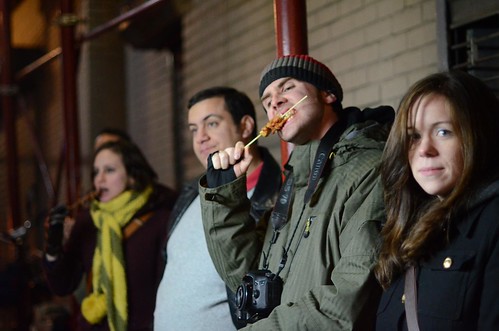
Text: Dan Meade
Photos: Dan Meade & Rob Bellinger
February 19, 2013
1 Comment
Comments are closed.